The Majestic Dehong Yingjiang Pagoda: A Must-Visit in Yunnan Province
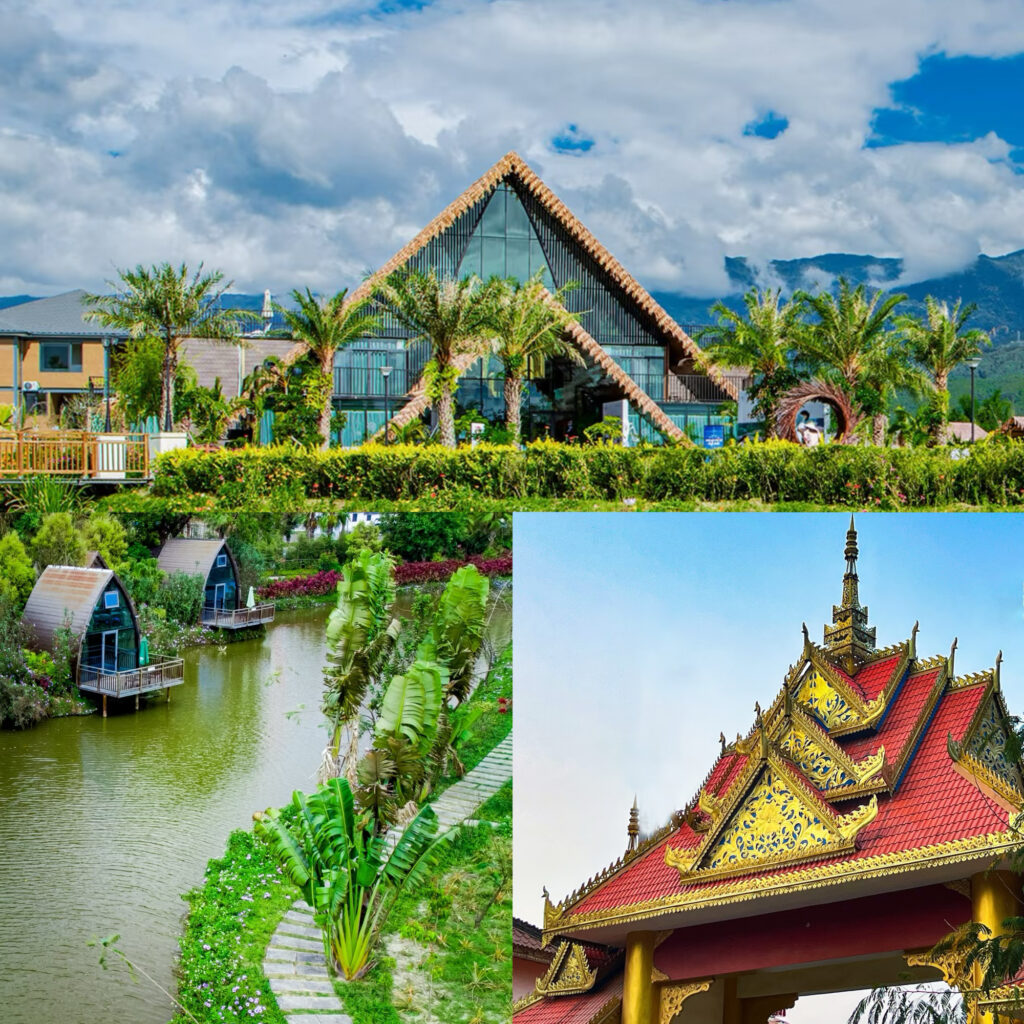
An Essential Guide to Visiting Dehong Yingjiang Pagoda
Nestled in the lush landscapes of Yunnan Province, the Dehong Yingjiang Pagoda stands as a towering testament to the region’s rich cultural tapestry and spiritual heritage. This remarkable structure, also known as the Yunyan Pagoda, represents a harmonious blend of nature and architecture, surrounded by the breathtaking beauty of the Jingpo and Dai ethnic landscapes. As you approach the pagoda, the towering silhouette against the sky invites you to embark on a journey through time, where ancient Buddhist traditions and vibrant local customs come alive.
Built in the 18th century, the Yingjiang Pagoda not only serves as a place of worship but also acts as a cultural beacon for the local community. During significant festivals, the area surrounding the pagoda transforms into a vibrant gathering place, filled with traditional music, dance, and the joyous laughter of families celebrating their heritage. This is a perfect opportunity for international travelers to immerse themselves in the local culture, engage with the friendly residents, and savor the delights of Yunnanese cuisine.
Whether you are a history enthusiast, a spiritual seeker, or simply a curious traveler, visiting the Dehong Yingjiang Pagoda promises an experience that resonates with the soul. With its stunning architecture, serene surroundings, and rich cultural significance, this pagoda is not just a landmark; it is a gateway to understanding the intricate connections between people, nature, and spirituality in one of China’s most enchanting regions.
In This Guide
- An Essential Guide to Visiting Dehong Yingjiang Pagoda
- The Rich History and Legends of Dehong Yingjiang Pagoda
- Main Highlights: What You Absolutely Can’t Miss
- Planning Your Visit: A Practical Guide
- Tickets: Prices, Booking, and Tips
- How to Get There: A Complete Transportation Guide
- Local Cuisine and Accommodation Nearby
- Frequently Asked Questions
- Final Thoughts on Your Trip
The Rich History and Legends of Dehong Yingjiang Pagoda
Nestled within the picturesque surroundings of Yingjiang County in Yunnan Province, the Dehong Yingjiang Pagoda stands as a testament to the rich tapestry of history and culture that defines the region. This ancient structure, also known as the Yunyan Pagoda, has not only served as a spiritual beacon for the local Buddhist community but also as a historical landmark that captures the essence of the diverse ethnic groups that inhabit this vibrant area.
A Glimpse into the Past
The origins of the Yingjiang Pagoda can be traced back to the reign of the Tang Dynasty (618-907 AD), a period known for its cultural flourishing and expansion of Buddhism across China. This era saw the establishment of significant Buddhist sites, and the Yingjiang Pagoda is believed to have been erected as part of this greater movement to integrate Buddhist practices within everyday life. The pagoda is a representation of the Hinayana school of Buddhism, which emphasizes personal enlightenment, and it has become a vital part of the local spiritual landscape.
Architectural Marvel
The pagoda’s design is emblematic of the architectural styles prevalent during its time, featuring intricate carvings and multiple tiers that reach towards the sky. Standing proudly amidst lush banyan trees, the structure is not only a site of worship but also a gathering place for the local community during important festivals. The annual Water-Splashing Festival celebrated by the Dai people brings the area around the pagoda to life, as locals and tourists alike come together to partake in traditional music, dance, and rituals that have been passed down through generations.
Legends and Folklore
Local legends add an enchanting layer to the history of the Yingjiang Pagoda. It is said that the pagoda houses the remains of revered Buddhist monks who played pivotal roles in spreading Buddhism throughout the region. These legends have given rise to tales of miraculous events and divine interventions, attracting pilgrims seeking blessings and spiritual solace.
One popular story recounts how the pagoda was built at the behest of a powerful local king who wished to honor a beloved monk. It is said that during the construction, the monk appeared in a vision and guided the workers, ensuring that the pagoda was aligned with the stars. This legend has cemented the pagoda’s status as a site of divine significance, where the spiritual and earthly realms converge.
Cultural Significance
Beyond its architectural beauty and spiritual importance, the Yingjiang Pagoda serves as a cultural hub that highlights the rich traditions of the Dai and Jingpo ethnic minorities. Festivals and ceremonies held in and around the pagoda foster a sense of community and continuity, allowing locals to express their cultural heritage while inviting visitors to experience the unique customs of this vibrant region.
The Dehong Yingjiang Pagoda stands not only as a historical monument but as a living symbol of the enduring legacy of Buddhism in Yunnan. As travelers explore its serene surroundings, they are reminded of the intricate narratives woven into the fabric of this remarkable land, where every stone tells a story and every festival celebrates a shared history.
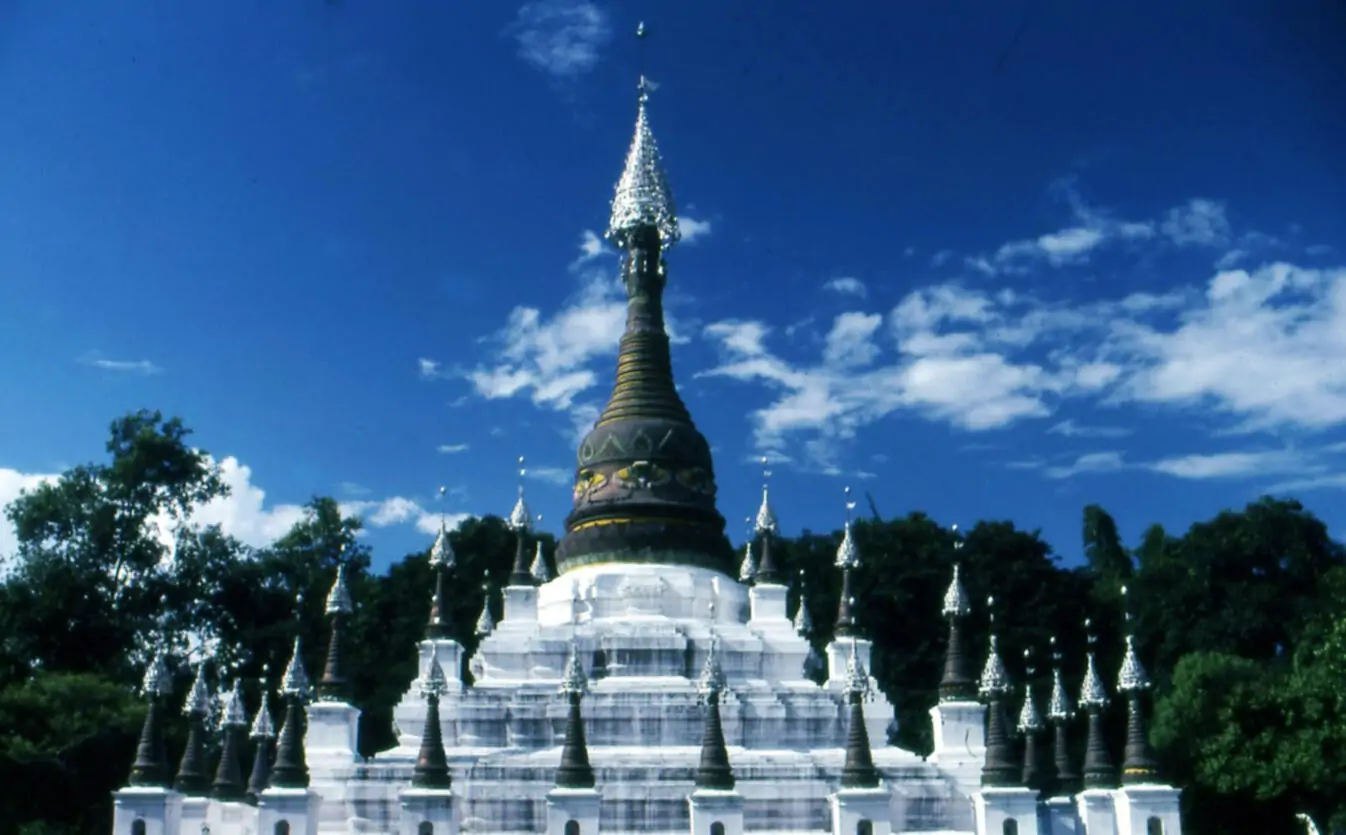
Dehong Yingjiang Pagoda.
Main Highlights: What You Absolutely Can’t Miss
When visiting the Dehong Yingjiang Pagoda, one of the most iconic landmarks in Yunnan Province, there are several highlights that should not be missed. Nestled in the picturesque Yingjiang County, this pagoda is not only a stunning architectural feat but also a hub of cultural and spiritual significance. Here’s what you absolutely can’t miss during your visit:
1. Architectural Marvel
The Yingjiang Pagoda is a striking example of traditional Buddhist architecture, reflecting the intricate craftsmanship and rich cultural heritage of the Dai and Jingpo ethnic groups. Standing tall against the backdrop of lush greenery and the serene landscape, the pagoda’s elegant design features delicate carvings and ornate details that beckon photography enthusiasts. Be sure to capture the unique angles of this stunning structure, especially during the golden hours of sunrise or sunset.
2. Breathtaking Views
Ascend the pagoda for panoramic views of the surrounding region. The vantage point offers a stunning perspective of the rolling hills, winding rivers, and the vibrant local communities. It’s a perfect spot for travelers to soak in the natural beauty of Dehong and appreciate the harmony between the pagoda and its environment.
3. Cultural Festivals
If your visit coincides with local festivals, you’re in for a treat. The area around the Yingjiang Pagoda comes alive during the Munao Festival of the Jingpo and the Water-Splashing Festival of the Dai. These celebrations are marked by vibrant performances, traditional music, and colorful attire. Engaging with the local culture during these times provides an unforgettable experience and deeper understanding of the region’s heritage.
4. Nearby Attractions
After exploring the pagoda, don’t miss the nearby attractions that complement your visit. Just a short distance away, you can find the Tree-Wrapped Pagoda, which is uniquely intertwined with banyan roots, and the Jiegao Border Trade Zone, where you can shop for local handicrafts and Burmese goods. Each of these sites offers a glimpse into the diverse culture and history of the area.
5. Tranquil Surroundings
The pagoda is surrounded by a serene landscape, perfect for a leisurely stroll. Take time to wander through the adjacent gardens, where you can find ancient banyan trees and tranquil paths. This peaceful environment is ideal for reflection and relaxation, allowing visitors to connect with nature and the spiritual essence of the place.
6. Local Cuisine
No trip to Dehong is complete without indulging in local delicacies. After your visit to the Yingjiang Pagoda, treat yourself to authentic Dai and Jingpo dishes at nearby eateries. From spicy bamboo shoots to fragrant rice dishes, the local cuisine offers a culinary adventure that reflects the rich culture of the region.
7. Engaging with Locals
Lastly, take the opportunity to interact with the local residents. The people of Yingjiang are known for their hospitality and warmth. Engaging in conversations can lead to fascinating insights about their traditions, lifestyles, and the significance of the pagoda in their daily lives.
Visiting the Dehong Yingjiang Pagoda is not merely about witnessing a historical site; it is an immersive experience that offers a window into the soul of Yunnan’s diverse cultures and stunning landscapes. Make sure to carve out ample time for each of these highlights to truly appreciate all that this remarkable destination has to offer.

Dehong Yingjiang Pagoda.
Planning Your Visit: A Practical Guide
Visiting Dehong Yingjiang Pagoda is a unique experience that combines culture, history, and breathtaking scenery. This practical guide will help you navigate your trip to this iconic site and make the most of your visit.
Getting There
By Air
The nearest airport to Dehong Yingjiang Pagoda is Mangshi Airport (also known as Luxi City Airport), located approximately 6.5 kilometers (4 miles) from the city center. The airport offers flights to major cities like Beijing, Shanghai, and Chengdu. From the airport, you can take a shuttle bus or a taxi to reach your accommodation in Dehong.
By Bus
If you’re traveling from nearby cities, long-distance buses are available to Dehong. The main bus stations are located in Ruili and Luxi, with Ruili being a popular starting point for those visiting the pagoda.
Best Time to Visit
Dehong enjoys a subtropical monsoonal climate, making winter (the dry season) the best time to visit. With average temperatures ranging from 18-20°C (64-68°F), the weather is pleasant, ideal for exploring outdoor attractions. However, the area is captivating year-round, so plan your visit based on your schedule and preferences.
Accommodation Options
Dehong offers a range of accommodations to suit various budgets. Here are some recommended options:
- Luxury Hotels: For a more upscale experience, consider hotels that offer stunning views of the surrounding landscapes and excellent amenities.
- Mid-Range Hotels: There are several comfortable hotels in the city center, providing easy access to local attractions and dining options.
- Budget Hostels: If you’re looking for a more economical choice, hostels and guesthouses in Dehong can offer a friendly atmosphere and opportunities to meet fellow travelers.
Exploring the Pagoda
Once you arrive at Dehong Yingjiang Pagoda, take your time to appreciate its architectural beauty and the serene environment surrounding it. Here are some tips for your visit:
- Guided Tours: Consider booking a guided tour to gain a deeper understanding of the history and significance of the pagoda. Knowledgeable guides can share fascinating stories and insights that enhance your experience.
- Photography: The pagoda, with its intricate designs and scenic backdrop, is a photographer’s dream. Plan to visit during the golden hour (early morning or late afternoon) for the best lighting.
- Cultural Events: Check if there are any cultural events or festivals happening during your visit. The area is known for vibrant celebrations, especially those related to the Dai and Jingpo ethnic groups.
Local Cuisine
Don’t miss the opportunity to indulge in local delicacies while you’re in Dehong. Popular dishes include:
- Dai-style Grilled Fish: A must-try, this dish is often seasoned with local herbs and spices, offering a unique taste of the region.
- Huilong Tea: Known for its refreshing flavor, this local tea is a delightful accompaniment to your meals.
- Dried Beef: A popular snack in the area, perfect for those on the go.
Getting Around
Public transportation in Dehong is convenient, with buses and taxis readily available. Renting a bicycle is also a fantastic way to explore the area at your own pace. If you’re planning to visit neighboring attractions, consider hiring a local driver who can take you to various sites, ensuring you make the most of your time.
Additional Tips
- Language: While Mandarin is widely spoken, you may encounter locals who speak Dai or Jingpo. Learning a few basic phrases in Mandarin can enhance your interactions.
- Cash: While larger establishments may accept cards, it’s advisable to carry cash, particularly when exploring local markets or smaller eateries.
- Respect Local Customs: Be mindful of local customs and traditions, especially when visiting religious sites. Dress modestly and observe any specific rules at the pagoda.
With this guide in hand, you’re well-equipped to enjoy a memorable visit to Dehong Yingjiang Pagoda. Embrace the rich cultural heritage and stunning natural beauty that this enchanting destination has to offer!
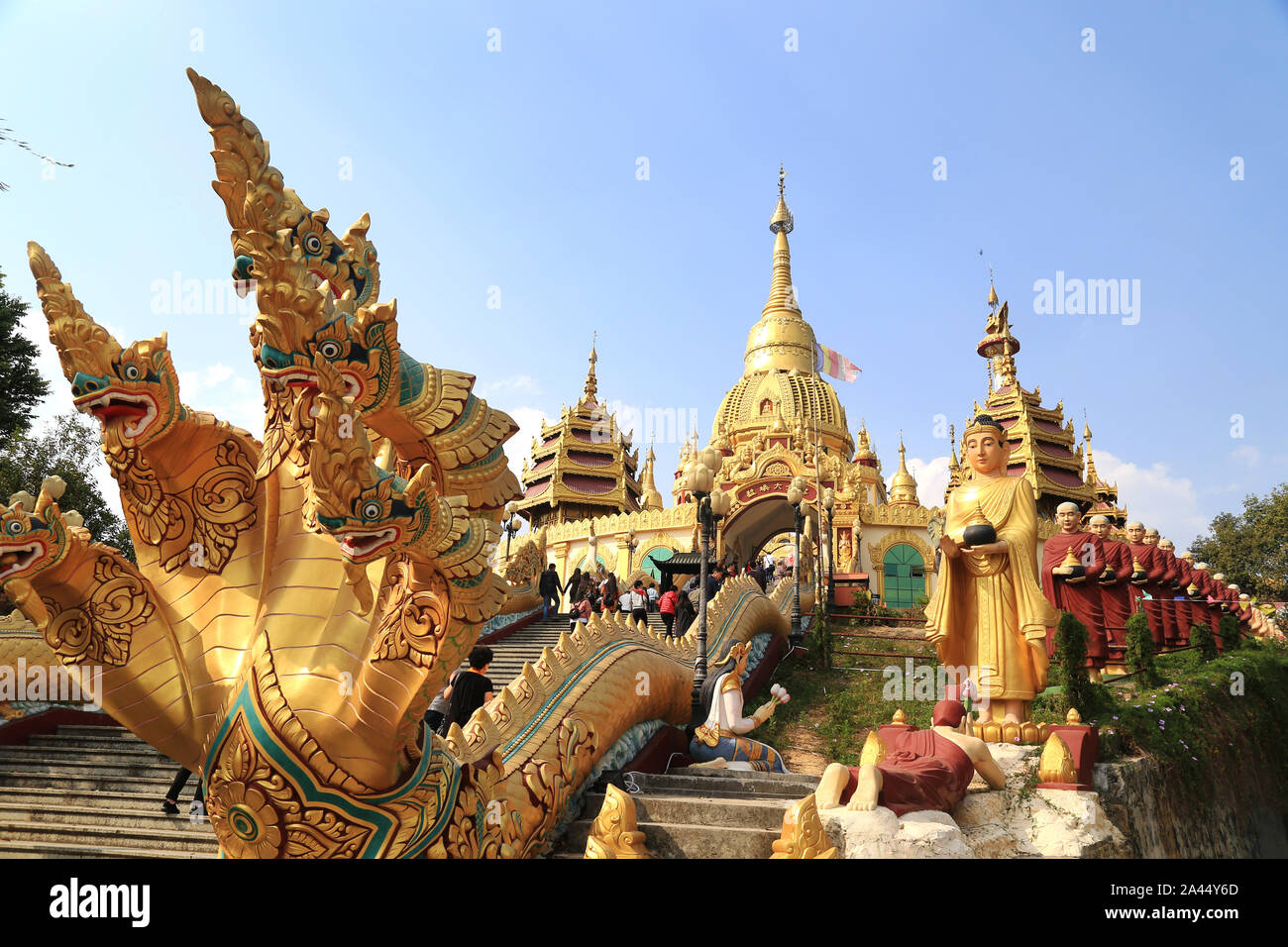
Dehong Yingjiang Pagoda.
Tickets: Prices, Booking, and Tips
Visiting the Dehong Yingjiang Pagoda is a captivating experience that combines cultural immersion with stunning architecture. For international travelers looking to explore this gem, here’s everything you need to know about tickets, pricing, booking options, and helpful tips.
Admission Fees
The ticket prices for the Dehong Yingjiang Pagoda are quite reasonable, making it accessible for most visitors. As of the latest updates, the entrance fee is approximately CNY 20 (about USD 3). This small investment grants you access to the pagoda and its beautifully maintained grounds, where you can take in the serene atmosphere and stunning views.
Booking Your Visit
While you can purchase tickets on-site, it is advisable to check if any local tour operators offer packages that include the pagoda as part of a broader itinerary. This can be particularly beneficial if you’re interested in guided tours that provide richer context about the pagoda’s history and significance within the region.
Best Times to Visit
Dehong’s subtropical climate means that the best time to visit the Yingjiang Pagoda is during the dry season, from November to March, when the weather is pleasant and conducive for exploration. However, if you want to experience the vibrant festivals nearby, consider visiting during the local celebrations, which can add an extra layer of excitement to your trip.
Tips for a Great Experience
- Arrive Early: Try to visit early in the morning or late in the afternoon. This not only allows you to enjoy cooler temperatures but also helps you avoid the larger crowds, giving you a more peaceful experience.
- Dress Comfortably: Wear comfortable shoes and clothing suitable for walking, as you’ll want to explore the surrounding areas and perhaps hike a little to enjoy the views.
- Local Guides: Consider hiring a local guide for a more in-depth understanding of the pagoda’s significance and the surrounding cultural context. Many guides are bilingual and can provide insights that enhance your visit.
- Respect Local Customs: As a site of cultural importance, be mindful of local customs and practices when visiting the pagoda. This includes dressing modestly and observing any specific rules during your visit.
Getting There
The Yingjiang Pagoda is conveniently located within the Yingjiang County area, which is accessible via public transportation from major cities in Dehong, such as Ruili and Mangshi. Plan your journey in advance to ensure a smooth trip.
Whether you’re a history buff, a photography enthusiast, or simply seeking a peaceful retreat, the Dehong Yingjiang Pagoda is a must-visit destination that promises to leave a lasting impression. Enjoy your visit!
How to Get There: A Complete Transportation Guide
Reaching the Dehong Yingjiang Pagoda is a delightful journey that allows you to experience the beautiful landscapes and rich culture of Yunnan province. Here’s a comprehensive guide to navigating your way to this stunning destination.
By Air
The nearest airport to the Yingjiang Pagoda is Mangshi Airport (Dehong Mangshi Airport), situated approximately 6.5 kilometers (4 miles) from the city center of Mangshi. The airport offers regular flights to major cities across China, including Beijing, Shanghai, Chengdu, and Xi’an.
Upon arrival, you can take an airport shuttle bus or a taxi to reach the city center, where you will find various accommodation options and local attractions.
By Bus
For those traveling by bus, Dehong is well-connected through various bus stations:
- Ruili Bus Station: Located at 8 Munao Lu, this station serves as a hub for buses traveling to and from other cities and regions.
- Luxi Central Bus Station: Situated at 252 Tuanjie Da Jie, Mangshi Town, this is another key station for travelers.
Buses from major cities in Yunnan such as Kunming and Baoshan frequently run to Dehong, making it easy for visitors to arrive comfortably.
By Train
While there are no direct trains to the Yingjiang Pagoda, you can take a train to Mangshi and then transfer to a local bus or taxi. The railway network in Yunnan has been expanding, and trains from major cities like Kunming to Mangshi are becoming more accessible.
Local Transportation
Once you arrive in Mangshi or Ruili, local transportation options include:
- Taxis: Easily available and a convenient way to reach the Yingjiang Pagoda from the city center. Make sure to negotiate the fare beforehand or ask the driver to use the meter.
- Bicycles and Motorbikes: For the adventurous traveler, renting a bicycle or motorbike can be a great way to explore the surrounding areas at your own pace.
Visiting the Pagoda
The Yingjiang Pagoda is located in Yingjiang County, approximately 70 kilometers (43 miles) from Mangshi. From Mangshi, you can take a bus to Yingjiang County, and then a short taxi ride will take you directly to the pagoda. The journey offers stunning views of the surrounding hills and valleys, making it a picturesque outing.
Tips for Travelers
- Check the Schedule: Transportation schedules can vary, so it’s a good idea to check the latest bus and train timetables ahead of your journey.
- Language: While many locals in tourist areas speak basic English, having a translation app or a phrasebook can be helpful, especially when discussing transportation options.
- Weather Considerations: The region enjoys a subtropical climate, so dress comfortably and carry water, especially if you plan to explore on foot.
By following this guide, you’ll find that reaching the Dehong Yingjiang Pagoda is not only feasible but also a wonderful opportunity to immerse yourself in the beautiful landscapes and rich culture of Yunnan. Enjoy your travels!
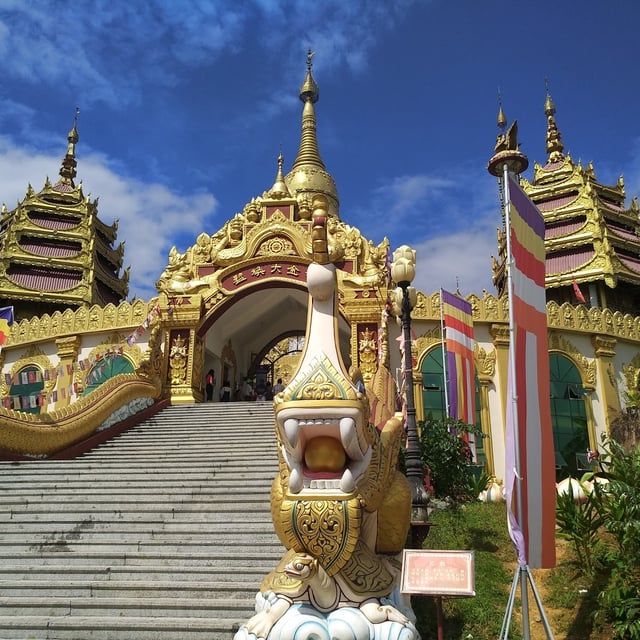
Dehong Yingjiang Pagoda.
Local Cuisine and Accommodation Nearby
Exploring the culinary delights and cozy accommodations near the Dehong Yingjiang Pagoda is an essential part of your visit to this stunning region. As you immerse yourself in the serene beauty of the pagoda, take the opportunity to savor the unique flavors of the local cuisine and find the perfect place to rest your head.
Culinary Highlights
-
Dai Cuisine: The local Dai cuisine is a must-try. Enjoy dishes such as Grilled Fish (烧鱼), marinated and cooked over an open flame, often served with a spicy dipping sauce. The Dai-style Rice Noodles (傣米粉) are another local favorite, typically accompanied by fresh vegetables and herbs.
-
Jingpo Dishes: Experience the rich flavors of Jingpo dishes, particularly Bamboo Rice (竹筒饭), where rice is steamed inside a bamboo tube, infusing it with a subtle aroma. Pair it with Stir-fried Vegetables (炒蔬菜) for a wholesome meal.
-
Local Snacks: Don’t miss out on street food options like Dried Beef (干牛肉) and Huilong Tea (回龙茶), a unique local tea that is refreshing and aromatic. The vibrant night markets nearby are perfect for sampling these treats.
-
Sweets: For dessert, indulge in Sticky Rice Cakes (糯米糕), often filled with sweetened red beans or coconut, embodying the flavors of the region.
Where to Stay
When it comes to accommodation, you have several great options to choose from that offer comfort and convenience:
-
Yingjiang Hotel: Located just a short distance from the pagoda, this hotel offers modern amenities and spacious rooms. Guests can enjoy a delightful breakfast featuring local dishes, setting you up for a day of exploration.
-
Dehong International Hotel: A bit further along but worth the trip, this hotel combines luxury with local charm. The on-site restaurant serves a mix of traditional Yunnanese and international cuisine, ensuring there’s something for everyone.
-
Mangshi Yijing Hotel: A budget-friendly option, this hotel is known for its clean, comfortable rooms and friendly staff. It’s a great base for exploring the area, especially during the local festivals.
-
Ruili Border Hotel: Perfect for those interested in the border trade scene, this hotel provides easy access to local markets and is just a short drive from Yingjiang Pagoda. It offers basic amenities and a cozy atmosphere.
Whether you are feasting on delectable local dishes or enjoying a comfortable stay, the area surrounding the Dehong Yingjiang Pagoda promises a rich cultural experience that will enhance your travels in this beautiful region of Yunnan.
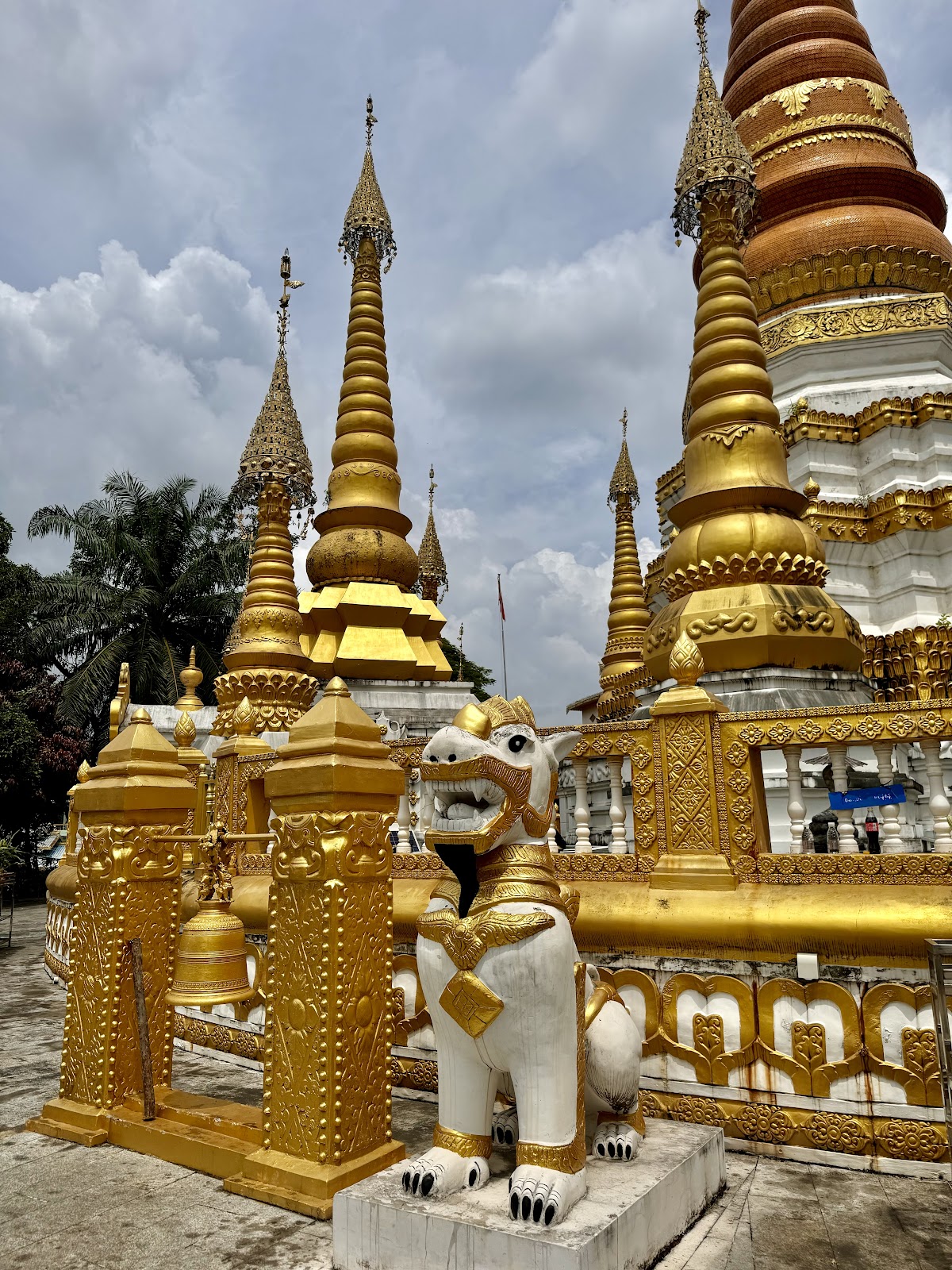
Dehong Yingjiang Pagoda.
Frequently Asked Questions
Frequently Asked Questions About Dehong Yingjiang Pagoda
1. What is the significance of Dehong Yingjiang Pagoda?
Dehong Yingjiang Pagoda, also known as Yunyan Pagoda, is an important Buddhist site located in Yingjiang County. It serves as a cultural and religious landmark for both locals and travelers, representing the Hinayana Buddhist tradition in Yunnan. The pagoda is surrounded by lush banyan trees and is a hub for local festivals.
2. How do I get to Dehong Yingjiang Pagoda?
The pagoda is easily accessible from the city center of Mangshi. You can take a local bus or hire a taxi, which typically takes about 30 minutes. For those driving, there are parking facilities available near the site.
3. Are there any entrance fees for visiting the pagoda?
Visiting Dehong Yingjiang Pagoda is generally free of charge. However, donations for the maintenance of the site are appreciated. It’s advisable to check for any special events or festivals that might have associated fees.
4. What are the best times to visit the pagoda?
The best time to visit is during the dry season, from November to March, when the weather is pleasant and clear for sightseeing. If you’re interested in experiencing local culture, consider visiting during the Munao Songs Festival in early spring.
5. What should I wear when visiting the pagoda?
As a religious site, it’s respectful to dress modestly. Lightweight, breathable clothing is ideal due to the subtropical climate, but covering your shoulders and knees is recommended. Comfortable shoes are also a must, as you may need to walk around the grounds.
6. Can I take photos at Dehong Yingjiang Pagoda?
Yes, photography is allowed at the pagoda, and you’ll find plenty of picturesque spots to capture the beauty of the architecture and surrounding nature. However, be mindful of local customs and avoid photographing people without their permission.
7. Are there any nearby attractions to explore after visiting the pagoda?
Absolutely! After your visit, consider exploring other nearby attractions such as the Tree-Wrapped Pagoda in Luxi City or the vibrant Jiegao Border Trade Zone. The scenic Daying River and Foguang Temple are also worth a visit.
8. What local delicacies should I try when visiting Dehong?
Don’t miss the chance to sample local specialties such as Huilong Tea and dried beef. The region is rich in culinary diversity, influenced by the various ethnic communities, so be sure to explore local eateries for authentic dishes.
Final Thoughts on Your Trip
As you reflect on your journey to Dehong and the serene beauty of the Yingjiang Pagoda, let the memories of this enchanting destination linger in your heart. The pagoda, with its intricate architecture and tranquil surroundings, serves as a reminder of the region’s rich cultural heritage and the harmonious blend of traditions that thrive here.
Wander through the lush landscapes, taste the exquisite local cuisine, and engage with the warm-hearted locals who embody the spirit of this unique area. Whether it’s the vibrant festivals, the stunning natural scenery, or the fascinating history that captures your imagination, Dehong offers a tapestry of experiences that resonate deeply.
As you prepare to leave, take a moment to appreciate the peaceful ambiance that the Yingjiang Pagoda imparts, and let it inspire you to carry the essence of Dehong with you, wherever your travels may take you next. Safe journeys await you, and may your adventures ahead be as enriching and unforgettable as the memories you’ve created in this remarkable corner of Yunnan!